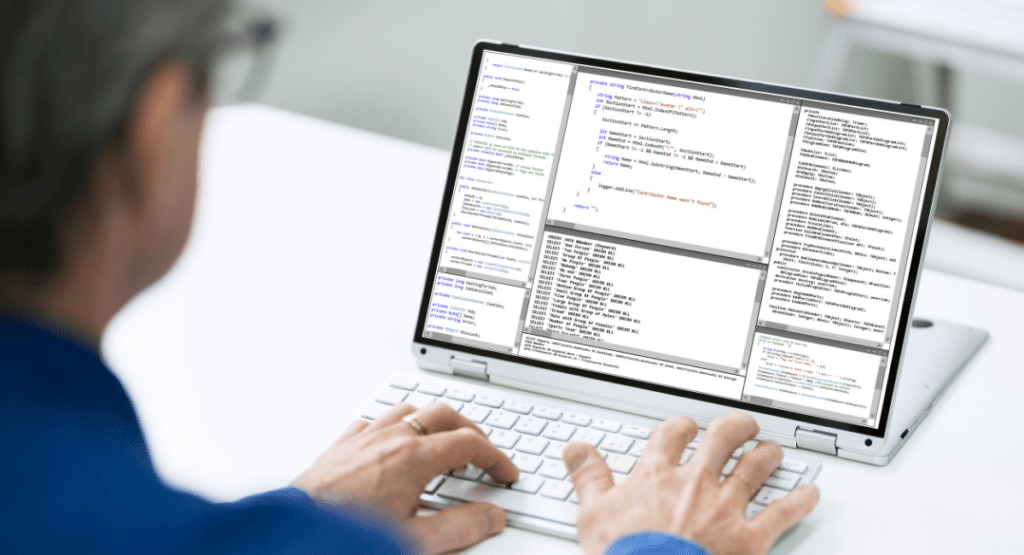Flutter is one of the most popular cross-platform mobile app development solutions currently in the market. According to Statista, Flutter is the second most popular cross-platform mobile framework by developers worldwide and 39% of coders use Flutter.
Flutter aims to provide a simplified and rapid development of cross-platform mobile apps while retaining the native design and visual consistency across platforms. With the recent launch of its latest upgrade (Flutter 2.0), Flutter has been enhanced from a mobile framework to a portable framework, allowing apps to run on different platforms with little or no change in the codebase.
Futter’s app development facility factors in differences between platforms and enable developers to build native-like apps using custom widgets. While Flutter was conventionally used for Android and iOS app development, the latest version is now providing support for other platforms such as Web, Mac, Windows, and Linux. Flutter can now be embedded in cars, TVs, and smart home appliances as well. In the following section, we’ll tell you more about why Flutter is sought-after for cross-platform mobile application development.
Flutter’s USPs to App Development
- Faster App development
Flutter’s ‘Hot Reload’ feature is a game-changer to hasten the cross-platform mobile app development process. It allows developers to make changes to the code, and instantly preview them without losing the current application state. Flutter also houses a wide variety of ready-to-use and customizable widgets along with Material and Cupertino widgets. These features especially come in handy while building a Minimum Viable Product (MVP).
- Single Codebase for Multiple Platforms
With its latest updates, Flutter allows for building apps that target mobile, web, desktop and embedded devices from a single codebase. Flutter enables developers to reuse the native codebase across platforms with minimal changes. This facility in Flutter greatly reduces the turnaround time to build applications for multiple platforms.
- Faster testing and QA
The use of a single codebase reduces the multiplicity of codes to develop cross-platform apps. The reduced volume of codes significantly optimizes app Testing and Quality Assurance with developers having to validate much fewer codes.
- Compatibility for Advanced UI
Flutter leverages an internal graphics engine called Skia, which is acclaimed to be fast and well-optimized and also used in Mozilla Firefox, Google Chrome, and Sublime Text 3. Flutter has also managed to accurately recreate Apple Design System elements and Material UI components internally. These widgets help define structural & stylistic elements to the layout without the need to use the native widgets. These powers Flutter to render a seamless app UI across platforms.
Flutter will indeed be a go-to SDK for mobile applications with advanced UI designs and customizations.
- Enhanced Time-to-Market
Flutter allows for 2D-based UI to be implemented without interacting with a native application counterpart. In addition, Flutter provides a declarative API for building UI which is known to improve the performance of the application and facilitate ease of visual adjustments.
- Consistent Native App-Like Performance
Applications built using Flutter are often indistinguishable from the native app and perform exceedingly well in scenarios with complex UI animation. Unlike most cross-platform frameworks, Flutter needs no intermediate code representations or interpretation. Applications developed using Flutter are directly built into the machine code, which improves the performance during the interpretation process. Consequently, applications built with Flutter will be fully compiled well beforehand.
- Sharing UI Across Platforms
Though most cross-platform frameworks allow sharing of codebase between the target platforms, Flutter differentiates itself with the benefit of sharing both the UI code and the UI. Flutter eliminates the dependence of platform-specific components to render UI by means of a canvas where the elements of the application UI can be populated.
The provision to share UI and app logic in Flutter saves time in development without diminishing the performance of the end product.
- Simple Platform-Specific Logic Implementation
Flutter offers ready-to-use plugins supported by Google for advanced OS features like fetching GPS coordinates, Bluetooth communication, gathering sensor data, permission handling among many.
Flutter also eases the process of establishing communication between platform-native code and Dart through platform channels. This allows developers to implement advanced features of native-app on Flutter with ease.
Conclusion
Flutter provides the much needed cross-platform versatility without compromising on the ease of app development. While offering an undiminished UX across platforms, Flutter greatly hastens the app development process through its comprehensive turnkey features.
Since its inception, the Flutter app development community has been growing steadily. Flutter is highly desirable to build cost and time-effective MVPs compatible across different platforms. It can be leveraged by established enterprises and startups alike. Flutter touts minimal risks to a business and a simple solution to app development that relieves businesses from seeking specialists, adjusting to new technologies, and force-fitting the tool into the development process.

